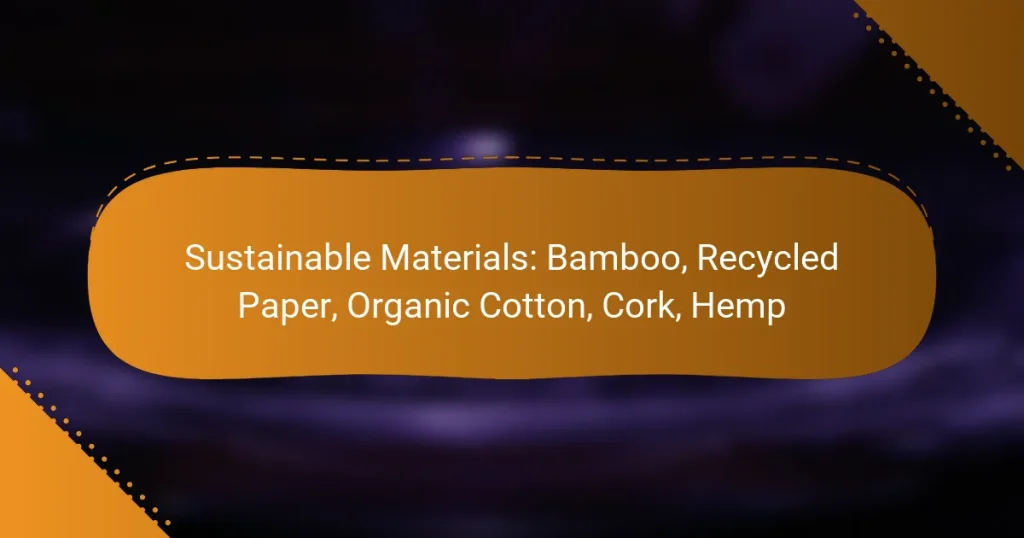Sustainable materials such as bamboo, recycled paper, organic cotton, cork, and hemp are gaining popularity for their eco-friendly properties and minimal environmental impact. Bamboo’s rapid growth and natural resilience make it a top choice, while recycled paper helps conserve resources and reduce waste. Organic cotton promotes healthier ecosystems by avoiding harmful chemicals, contributing to a more sustainable textile industry.
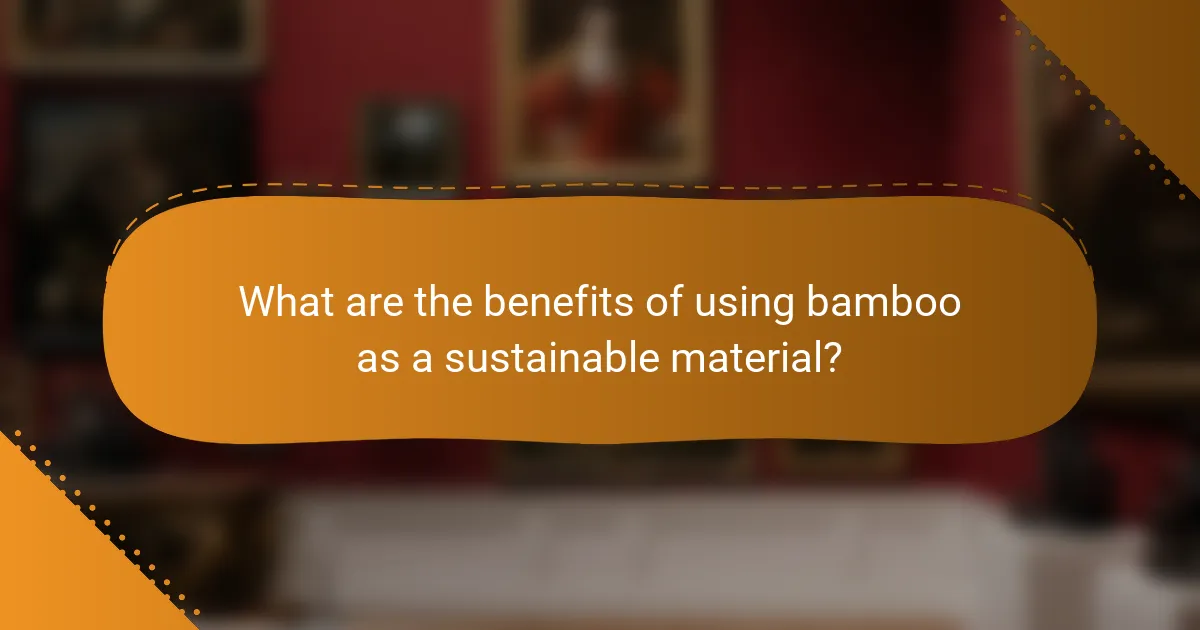
What are the benefits of using bamboo as a sustainable material?
Bamboo offers numerous advantages as a sustainable material, including its rapid growth, natural pest resistance, and significant carbon sequestration capabilities. These traits make it an attractive option for eco-conscious consumers and manufacturers alike.
Rapid growth and renewability
Bamboo is one of the fastest-growing plants in the world, capable of reaching maturity in just three to five years. This rapid growth allows for frequent harvesting without depleting resources, making it a highly renewable material.
In contrast to traditional timber, which can take decades to mature, bamboo can be harvested sustainably multiple times within a short period. This characteristic significantly reduces the pressure on forests and promotes a more sustainable approach to material sourcing.
Natural pest resistance
Bamboo contains natural compounds that make it resistant to pests and diseases, reducing the need for chemical pesticides. This inherent pest resistance contributes to a healthier ecosystem and minimizes environmental impact.
By choosing bamboo products, consumers can support agricultural practices that are less reliant on harmful chemicals, promoting a more sustainable and organic approach to farming.
Carbon sequestration capabilities
Bamboo plays a crucial role in carbon sequestration, absorbing carbon dioxide from the atmosphere and storing it in its biomass. This process helps mitigate climate change by reducing greenhouse gases.
Research indicates that bamboo can absorb more carbon dioxide than many tree species, making it an effective tool in combating climate change. Incorporating bamboo into products not only supports sustainable practices but also contributes to a healthier planet.
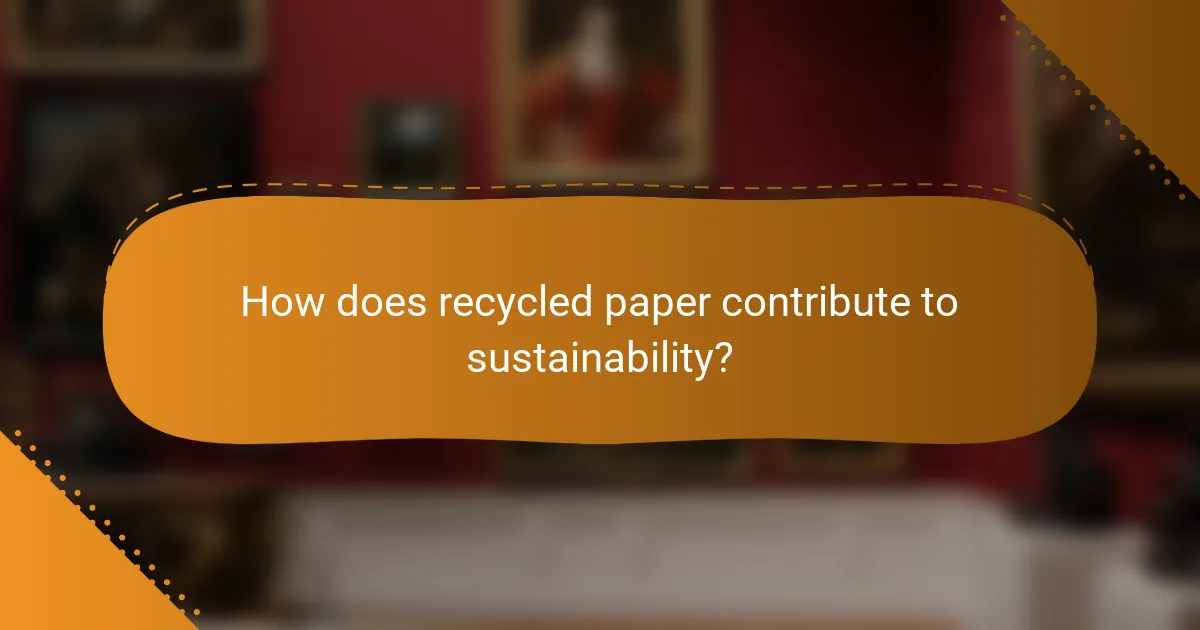
How does recycled paper contribute to sustainability?
Recycled paper plays a significant role in sustainability by reducing the demand for virgin materials and minimizing environmental impact. By reusing existing paper products, we can conserve resources, lower energy consumption, and decrease landfill waste.
Reduces landfill waste
Using recycled paper significantly cuts down on landfill waste, as it diverts paper products from disposal sites. In many regions, paper constitutes a large portion of municipal solid waste, and recycling helps mitigate this issue. By choosing recycled paper, consumers actively participate in reducing the volume of waste that ends up in landfills.
For example, recycling one ton of paper can save approximately 3.3 cubic yards of landfill space. This reduction not only helps in managing waste but also lessens the environmental burden associated with landfill operations.
Conserves natural resources
Recycling paper conserves essential natural resources such as trees, water, and energy. Each ton of recycled paper can save around 17 trees, which contributes to forest preservation and biodiversity. Additionally, the process of recycling uses significantly less water compared to producing new paper from raw materials.
By opting for recycled paper, consumers help decrease the demand for logging and the associated environmental degradation. This conservation effort is crucial for maintaining healthy ecosystems and ensuring sustainable resource management.
Lower energy consumption in production
The production of recycled paper requires less energy compared to that of virgin paper. Estimates suggest that recycling paper can save up to 60% of the energy needed to produce new paper from trees. This energy efficiency translates to lower greenhouse gas emissions and a reduced carbon footprint.
For businesses and consumers alike, choosing recycled paper not only supports sustainability but can also lead to cost savings in energy use. By making this choice, individuals contribute to a more sustainable future while potentially benefiting from lower utility costs associated with energy-efficient practices.
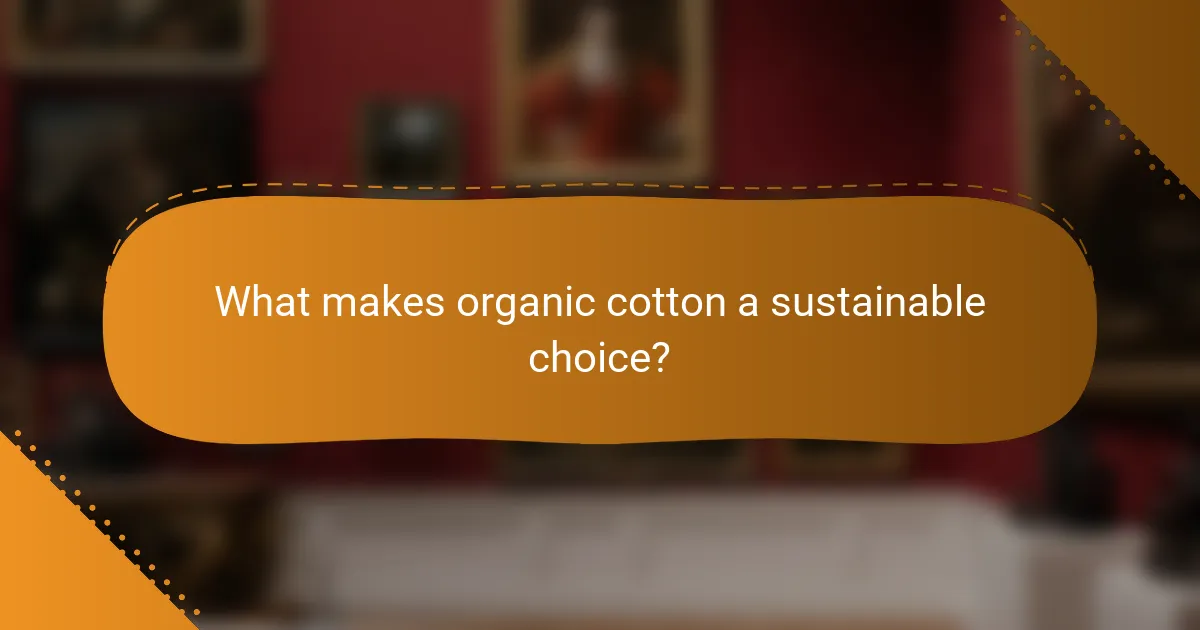
What makes organic cotton a sustainable choice?
Organic cotton is considered a sustainable choice because it is grown without synthetic pesticides and fertilizers, promoting healthier ecosystems. This method of cultivation not only reduces chemical runoff but also supports soil health and biodiversity.
No synthetic pesticides or fertilizers
Organic cotton is cultivated without the use of synthetic pesticides or fertilizers, which can harm the environment and human health. Instead, organic farmers utilize natural alternatives, such as crop rotation and beneficial insects, to manage pests and maintain soil fertility.
This approach minimizes chemical exposure for farmers and surrounding communities, leading to safer working conditions. Additionally, it helps preserve the quality of local water sources by preventing harmful substances from leaching into the ecosystem.
Water conservation practices
Organic cotton farming often employs water conservation techniques that are crucial in regions facing water scarcity. Practices such as rainwater harvesting and drip irrigation help reduce water usage significantly compared to conventional cotton farming.
By focusing on efficient water management, organic cotton can be produced with less strain on local water supplies, making it a more sustainable option in areas where water resources are limited.
Supports biodiversity
Organic cotton farming enhances biodiversity by creating habitats for various species. The absence of harmful chemicals allows for a more balanced ecosystem, where beneficial insects and wildlife can thrive alongside cotton crops.
Furthermore, organic practices often include intercropping and maintaining natural vegetation, which supports a diverse range of flora and fauna. This biodiversity is essential for resilient agricultural systems and contributes to the overall health of the environment.

What are the advantages of cork as a sustainable material?
Cork is a highly sustainable material known for its eco-friendly properties and versatility. It is harvested from the bark of cork oak trees without causing damage, making it a renewable resource that contributes positively to the environment.
Harvesting does not harm trees
The process of harvesting cork involves stripping the bark from cork oak trees, which allows the trees to continue growing and producing cork for many years. This method not only preserves the tree but also promotes biodiversity in cork forests, which serve as habitats for various species.
Cork oak trees can be harvested every 9 to 12 years, and they can live for over 200 years. This sustainable practice ensures a continuous supply of cork while maintaining the health of the forest ecosystem.
Biodegradable and recyclable
Cork is both biodegradable and recyclable, making it an excellent choice for environmentally conscious consumers. When disposed of, cork naturally decomposes, returning nutrients to the soil without harmful residues.
Additionally, cork products can be recycled into new items, reducing waste and promoting a circular economy. Many companies are now creating innovative products from recycled cork, further enhancing its sustainability profile.
Natural insulation properties
Cork possesses excellent thermal and acoustic insulation properties, making it a popular choice for flooring and wall coverings. Its unique cellular structure traps air, providing effective insulation against heat and sound.
This natural insulation can lead to energy savings in buildings, as it helps maintain comfortable indoor temperatures and reduces the need for heating and cooling systems. Using cork in construction can contribute to lower energy bills and a reduced carbon footprint.
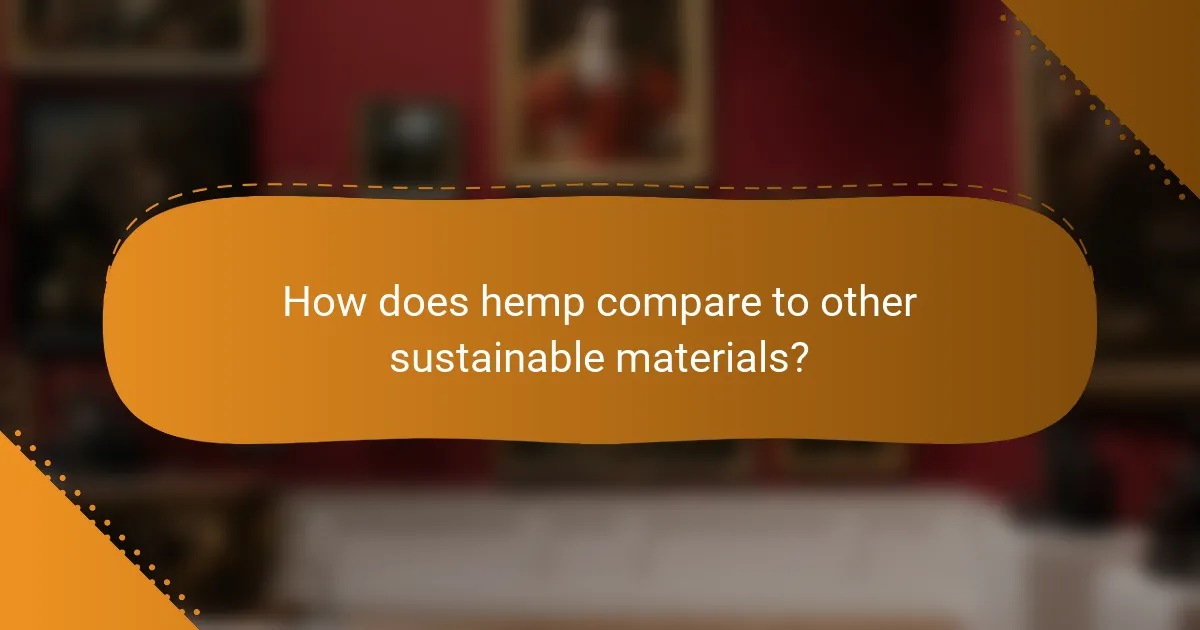
How does hemp compare to other sustainable materials?
Hemp stands out among sustainable materials due to its high yield, soil health benefits, and versatility in various applications. Compared to bamboo, recycled paper, organic cotton, and cork, hemp offers unique advantages that make it a compelling choice for eco-friendly products.
High yield per acre
Hemp is known for its impressive yield, producing significantly more fiber per acre than many other crops. It can yield around 1,000 to 2,500 pounds of fiber per acre, depending on the variety and growing conditions. This high productivity makes hemp a cost-effective option for manufacturers seeking sustainable materials.
In contrast, organic cotton yields about 300 to 800 pounds per acre, highlighting hemp’s efficiency. This difference in yield can lead to lower costs and reduced land use, making hemp a more sustainable choice for large-scale production.
Soil health improvement
Hemp contributes positively to soil health by preventing erosion and improving soil structure. Its deep root system helps aerate the soil and enhances its nutrient content, which can benefit subsequent crops. This regenerative aspect makes hemp a valuable rotation crop for farmers.
Additionally, hemp can absorb heavy metals from the soil, making it useful for phytoremediation. This process not only cleans contaminated land but also prepares it for future agricultural use, promoting long-term sustainability.
Versatile applications in textiles and construction
Hemp’s versatility allows it to be used in a wide range of applications, from textiles to construction materials. In textiles, hemp fibers are strong, durable, and naturally resistant to mold and UV light, making them ideal for clothing, ropes, and other fabric products.
In construction, hemp can be processed into hempcrete, a lightweight and insulating material that is both eco-friendly and energy-efficient. This adaptability across industries positions hemp as a key player in the movement towards sustainable living.
